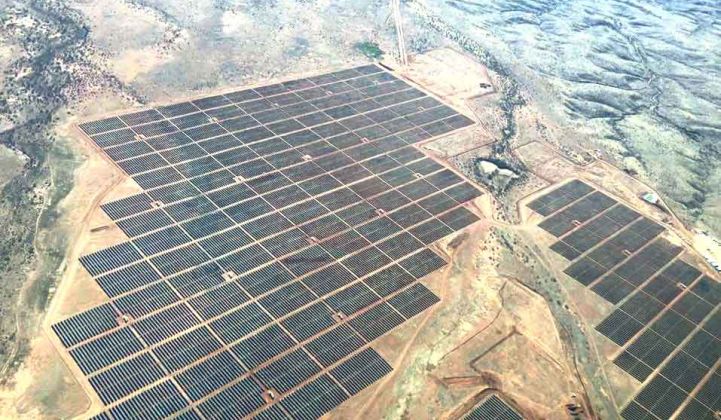Until very recently, the vital ingredient to launch and grow a market for solar energy in the United States has been the same: government support.
Few people know that better than Allan Gregg, CTO of inverter manufacturer Sungrow USA. “I’ve been doing this for 37 years, and for all of that time it has always been the belief that solar power can’t be competitive with conventionally generated power,” said Gregg. “It has required heavy state and federal subsidies just to survive.”
That is no longer the case. It took 40 years for the U.S. to reach 1 million solar installations, a feat achieved in 2016, but that figure is expected to double by 2018. Solar projects are being built in places like Michigan, Nebraska, Oklahoma, Illinois, Minnesota and Kentucky.
“You’re seeing areas that have historically not been really strong solar states, and they’re going to be putting in these 6- to 10-megawatt systems,” he said. “The fog in the crystal ball of solar’s future is fading away.”
The maturation of the industry and what it’s asking for
The maturation of the U.S. solar market is reflected in many ways, including solar standing on its own economically and the increasing sophistication with which developers and EPCs make their decisions about which modules and inverters to use when building large-scale solar projects.
“There has been time during the last 10 years for some people to get burned by inverters that are down all the time and companies going out of business and leaving inverters orphaned,” said Gregg. “Nobody wants to invest money in a system that ends up that way.”
As a result, more EPCs and developers are moving beyond a singular focus on the upfront costs to a more comprehensive assessment that also considers the long-term price tag of operations and maintenance (O&M).
This evolution of the market can be observed in the increase in number of project planners considering the use of string inverters with a central architecture design -- an approach that Sungrow has called the “virtual central inverter” concept, which brings together 1,500-volt string inverters and the centralized command and control usually seen with central inverters.
The argument in favor of using a virtual central inverter concept becomes more compelling as new devices with higher voltage and capacity hit the market. Sungrow began shipping the 125-kilowatt, 1,500-volt DC SG125HV string inverter to U.S. solar developers in August.
Higher-capacity and higher-voltage string inverters employed with a central architecture provide developers with widely acknowledged O&M benefits of string inverters and an upfront cost that rivals central inverters -- which have been the default choice of developers and EPCs in the U.S.
“Because of the maturity of the market, nobody at any level is ignoring the O&M. That is a very big factor now,” said Gregg. “The days of hiring an EPC and saying, 'Build me the lowest-cost system' are not completely gone. But the awareness of the potential impacts of the high costs of O&M is front and center. Now when you hire an EPC, there’s a good chance you’re asking for the lowest upfront cost and the lowest O&M cost. That has a big impact on the demand for string inverters in a central architecture.”
Gregg’s contention about the increasing popularity of string inverters in the U.S. is borne out by GTM Research’s most recent inverter market forecast. The report found that less than 5 percent of 5-megawatt and larger projects in the U.S. used string inverters in 2016. But GTM Research projects that string inverters will grab more than 20 percent of the market by 2022.
Gregg also believes the advantages of string inverters used with a central architecture are especially attractive to designers of the projects. Sungrow believes virtual central inverters will constitute a large share of the North American market -- that is, systems in the 5- to 50-megawatt range, many located in states that have seen little solar development thus far.
Design flexibility becomes a top consideration
A maturing North American solar market puts a greater emphasis on O&M, but also a greater focus on design flexibility, as solar projects become financially viable across a range of locations and sites.
“If you use the centralized architecture and small inverters, groups of them, the service tech goes to one place and he can access all of the inverters at once rather than driving around from one to another,” said Gregg.
For system designers, that removes the need to configure the array size around the size of a large central inverter. “The capacity of the centralized architecture system can be customized to match the array instead of the other way around,” said Gregg. “You don’t have to match the array to a fixed size inverter; you can adjust the size of the inverter to match the array, and that helps designers working in different geographies and constraints. A system designer can size it for what is optimal for them.”
That’s just the sort of thing that happens when an industry matures.



